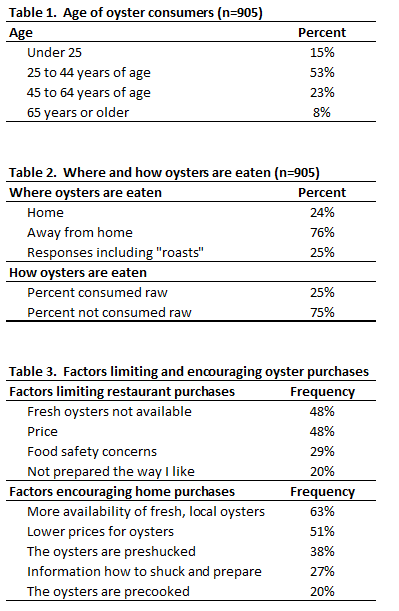SURVEY CAPTURES SOUTH CAROLINA OYSTER CONSUMER PREFERENCES
In August 2020, over twelve hundred (1210) consumers in South Carolina were asked about their oyster consumption. Of the consumers surveyed, 905 (75%) were oyster consumers and 305 were non-oyster consumers. The high percentage of oyster consumers was somewhat surprising, but this finding was reinforced by a separate Clemson study which found that South Carolinians consume almost twice the amount of oysters per capita versus the U.S. average (Cheplick et al., 2020).
Survey results showed that oyster consumer demographics were consistent with other studies with respect to education and household income, but not age. South Carolina oyster consumers tended to be under 45 years of age, while other surveys suggest that younger adults consume less seafood (Jahns et al., 2014).
The survey found that 76% of oyster consumption occurred away from home, at restaurants and oyster roasts. Previous studies had also pointed out that most seafood consumption occurs away from home—between 62% (Zhang et al., 2004) and 90% (Richards, 2020), but the number of responses including "roasts" was surprising, at 25% of all responses.
Another finding was that most oyster consumers preferred their oysters cooked (75%) versus raw. This finding is especially important for South Carolina oyster producers, as most of their oysters are marketed to the raw, on the half-shell market.
Finally, availability and price were the main factors limiting oyster purchases. Restaurant consumers mentioned price (48%) and availability (48%) limit their purchases while those eating oysters at home responded that lower prices (51%) and increased availability (63%) would encourage more oyster purchases.
